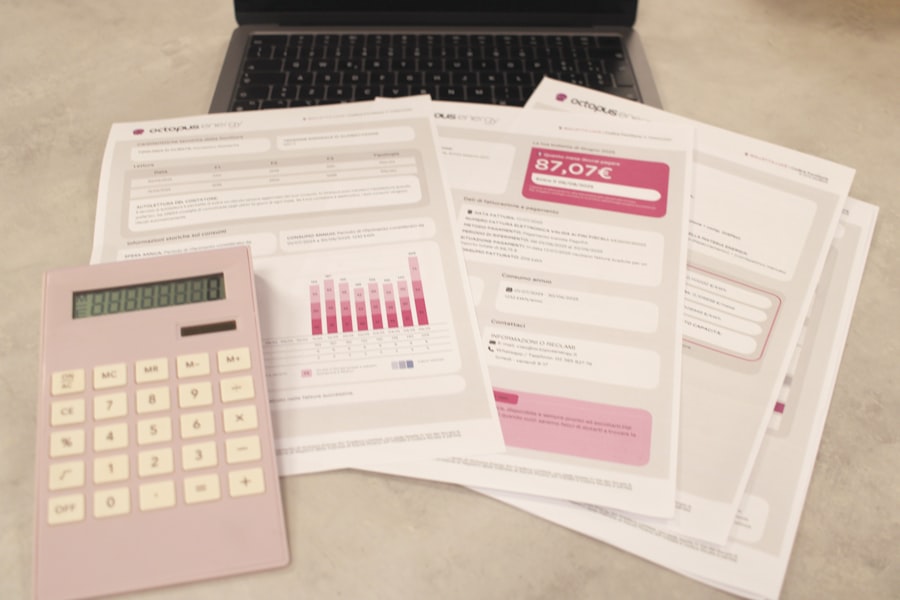Bureaucracy, often characterized by its complex procedures and rigid hierarchies, comes with a significant financial burden. You may not realize it, but the costs associated with maintaining bureaucratic systems can be staggering. From the salaries of countless employees to the expenses incurred in managing extensive paperwork, the financial implications are profound.
These costs are not merely numbers on a balance sheet; they translate into real money that could be better spent on services, infrastructure, or innovation. As you navigate through various sectors, you might find that the inefficiencies bred by bureaucracy often lead to inflated operational costs, which ultimately trickle down to consumers and taxpayers alike. Moreover, the cost of bureaucracy extends beyond mere financial implications.
It can stifle growth and limit opportunities for individuals and organizations. When you consider the time and resources spent on navigating bureaucratic red tape, it becomes clear that these systems can hinder progress. The layers of approval required for even the simplest decisions can create a bottleneck effect, slowing down processes that could otherwise be streamlined.
This not only affects businesses but also impacts public services, where the need for efficiency is paramount. As you reflect on these aspects, it becomes evident that the cost of bureaucracy is not just a matter of dollars and cents; it is a barrier to progress and innovation.
Key Takeaways
- Bureaucracy comes with a high financial cost, impacting both businesses and government agencies.
- Small businesses are disproportionately affected by bureaucratic processes, hindering their growth and success.
- Wasted time and resources are a common consequence of bureaucratic red tape, leading to inefficiency and frustration.
- Government agencies are burdened by bureaucratic processes, diverting resources from their core functions.
- Bureaucracy can stifle innovation and creativity, hindering progress and development.
The Impact on Small Businesses
Small businesses often bear the brunt of bureaucratic inefficiencies. As an entrepreneur or someone involved in a small enterprise, you may find yourself grappling with an overwhelming amount of regulations and compliance requirements. These hurdles can be particularly daunting for small business owners who may lack the resources to navigate complex bureaucratic landscapes.
The time spent on paperwork and compliance can detract from your ability to focus on core business activities, stifling growth and innovation. You might feel that instead of fostering creativity and entrepreneurship, bureaucracy creates an environment where small businesses struggle to survive. Additionally, the impact of bureaucracy on small businesses extends to their ability to compete in the marketplace.
Larger corporations often have dedicated teams to handle regulatory compliance, allowing them to absorb the costs associated with bureaucracy more easily. In contrast, as a small business owner, you may find yourself at a disadvantage, forced to allocate precious resources to meet bureaucratic demands rather than investing in product development or marketing strategies. This imbalance can lead to a lack of diversity in the marketplace, as fewer small businesses are able to thrive amidst the weight of bureaucratic constraints.
Wasted Time and Resources

Time is one of your most valuable resources, yet bureaucracy often leads to its significant wastage. You may have experienced situations where simple tasks become convoluted due to excessive procedures and approvals. Each step in a bureaucratic process can take longer than necessary, leading to frustration and inefficiency.
This wasted time not only affects individual productivity but also has broader implications for organizations and society as a whole. When you consider how much time is lost in navigating bureaucratic hurdles, it becomes clear that this inefficiency can stifle progress and innovation. Moreover, the resources consumed by bureaucratic processes are often disproportionate to their outcomes.
You might find that the energy spent on compliance and paperwork could be redirected toward more productive endeavors. This misallocation of resources can lead to missed opportunities for growth and development. In an age where agility and adaptability are crucial for success, the rigidity of bureaucracy can hinder your ability to respond swiftly to changing circumstances.
As you reflect on these challenges, it becomes evident that addressing wasted time and resources is essential for fostering a more efficient and effective system.
The Burden on Government Agencies
| Government Agency | Financial Burden | Workload |
|---|---|---|
| Health Department | Increased funding for healthcare services | Higher demand for public health programs |
| Education Department | Additional resources for remote learning | Adapting to new teaching methods |
| Transportation Department | Investment in infrastructure maintenance | Managing changes in public transportation |
Government agencies are not immune to the burdens imposed by bureaucracy. As you engage with public services, you may notice that bureaucratic processes can lead to inefficiencies that affect service delivery. The layers of approval and extensive documentation required for even basic functions can slow down operations, leaving citizens frustrated with long wait times and inadequate services.
Furthermore, the burden of bureaucracy on government agencies can lead to a lack of accountability and transparency. When processes become overly complicated, it can be challenging for citizens like you to understand how decisions are made or who is responsible for specific outcomes.
This lack of clarity can erode trust in public institutions, making it difficult for agencies to fulfill their mandates effectively. As you consider these dynamics, it becomes clear that addressing bureaucratic burdens within government agencies is essential for improving service delivery and restoring public confidence.
The Effect on Innovation and Creativity
Bureaucracy can stifle innovation and creativity in various sectors. As you navigate through organizations or industries characterized by rigid structures, you may find that the emphasis on compliance often overshadows the need for creative problem-solving. When processes are dictated by strict rules and regulations, there is little room for experimentation or out-of-the-box thinking.
This environment can discourage individuals from proposing new ideas or taking risks, ultimately hindering progress. Moreover, the fear of bureaucratic repercussions can lead to a culture of conformity rather than one that encourages innovation. You might notice that employees are hesitant to suggest improvements or challenge the status quo due to concerns about navigating complex approval processes.
This reluctance can create a stagnant atmosphere where creativity is stifled, preventing organizations from adapting to changing market demands or technological advancements. As you reflect on these challenges, it becomes evident that fostering an environment conducive to innovation requires addressing the constraints imposed by bureaucracy.
Environmental and Social Consequences

The consequences of bureaucracy extend beyond economic implications; they also encompass environmental and social dimensions. As you consider the regulatory frameworks governing environmental protection, you may find that bureaucratic processes can hinder timely action on pressing issues such as climate change or resource conservation. Lengthy approval processes for environmental initiatives can delay critical projects aimed at sustainability, ultimately exacerbating environmental challenges.
Socially, bureaucracy can create barriers for marginalized communities seeking access to essential services or support systems. You might observe that complex eligibility requirements or convoluted application processes disproportionately affect those who are already vulnerable. This inequity can perpetuate cycles of disadvantage and limit opportunities for social mobility.
The Global Perspective
Bureaucracy is not confined to any single country; it is a global phenomenon with varying degrees of impact across different regions. As you explore international contexts, you may find that some countries have successfully streamlined their bureaucratic processes while others continue to grapple with inefficiencies. In developing nations, excessive bureaucracy can hinder economic growth and development efforts, limiting access to resources and opportunities for citizens.
Conversely, some countries have embraced reforms aimed at reducing bureaucratic red tape and enhancing efficiency. You might look at examples where governments have implemented digital solutions or simplified regulatory frameworks to foster entrepreneurship and innovation. These global perspectives highlight the importance of learning from best practices while recognizing the unique challenges faced by different nations.
As you consider these dynamics, it becomes evident that addressing bureaucracy requires a nuanced understanding of local contexts and a commitment to continuous improvement.
Solutions and Reforms
Addressing the challenges posed by bureaucracy requires thoughtful solutions and reforms tailored to specific contexts. As you engage with this issue, you might consider advocating for streamlined processes that prioritize efficiency without compromising accountability. Simplifying regulations and reducing unnecessary paperwork can alleviate burdens on individuals and organizations alike, fostering an environment conducive to growth.
Moreover, engaging stakeholders in the reform process is crucial for ensuring that changes reflect diverse perspectives and needs. You may find that involving citizens, businesses, and public servants in discussions about bureaucratic reform can lead to more effective solutions. By fostering collaboration and open dialogue, it becomes possible to identify pain points within existing systems and develop targeted strategies for improvement.
The Role of Technology
Technology plays a pivotal role in reshaping bureaucratic processes for the better. As you explore this landscape, you might discover how digital tools can streamline operations and enhance efficiency within organizations and government agencies alike. From online applications to automated workflows, technology has the potential to reduce paperwork and expedite decision-making processes.
Furthermore, technology can enhance transparency and accountability within bureaucratic systems. You may find that digital platforms allow citizens like you to track applications or access information more easily, fostering trust in public institutions. By leveraging technology effectively, organizations can create more responsive systems that prioritize user experience while maintaining necessary oversight.
The Importance of Streamlining Processes
Streamlining processes is essential for mitigating the negative effects of bureaucracy on individuals and organizations alike. As you consider this imperative, you might reflect on how simplifying procedures can lead to increased efficiency and improved outcomes across various sectors. By identifying redundancies and eliminating unnecessary steps, organizations can create more agile systems that respond effectively to changing needs.
Moreover, streamlining processes fosters a culture of continuous improvement within organizations. You may find that when employees are empowered to identify inefficiencies and propose solutions, it leads to greater engagement and innovation. This proactive approach not only enhances productivity but also contributes to a more positive organizational culture where individuals feel valued for their contributions.
The Future of Bureaucracy
The future of bureaucracy is likely to be shaped by ongoing reforms aimed at enhancing efficiency and responsiveness. As you look ahead, you might envision a landscape where technology plays an increasingly central role in streamlining processes and reducing red tape. The integration of digital solutions could transform how organizations operate, making them more adaptable to changing circumstances.
However, it is essential to recognize that while technology offers promising solutions, it cannot replace the need for human oversight and accountability entirely. As you contemplate this future, it becomes clear that striking a balance between efficiency and responsibility will be crucial for creating systems that serve individuals effectively while upholding ethical standards. In conclusion, addressing the challenges posed by bureaucracy requires a multifaceted approach that considers economic, social, environmental, and technological dimensions.
By advocating for reforms aimed at streamlining processes and leveraging technology effectively, you can contribute to creating a more efficient and equitable system that benefits everyone involved.
The concept of a “bureaucracy tax” refers to the hidden costs and inefficiencies that arise from complex administrative processes and regulations, which can hinder economic growth and individual prosperity. This idea is explored in various economic discussions, highlighting how excessive bureaucracy can act as a drag on productivity and innovation. For a deeper understanding of how these inefficiencies impact wealth creation and economic dynamics, you can explore related insights in an article on How Wealth Grows. This resource delves into the mechanisms of wealth accumulation and the factors that can either facilitate or impede economic progress.
HERE IS WHY Most Careers Are Designed To Fail
FAQs
What is the bureaucracy tax?
The bureaucracy tax refers to the time and resources individuals and businesses spend navigating through government regulations, paperwork, and red tape.
How does the bureaucracy tax affect individuals and businesses?
The bureaucracy tax can lead to increased costs, delays in decision-making, and a drain on productivity for individuals and businesses.
What are some examples of the bureaucracy tax?
Examples of the bureaucracy tax include filling out government forms, obtaining permits and licenses, complying with regulations, and dealing with government agencies.
How can the bureaucracy tax be reduced?
Efforts to reduce the bureaucracy tax include streamlining regulations, simplifying government processes, and implementing digital solutions to make interactions with government agencies more efficient.
What are the potential benefits of reducing the bureaucracy tax?
Reducing the bureaucracy tax can lead to cost savings, increased productivity, and a more business-friendly environment, ultimately fostering economic growth and innovation.
